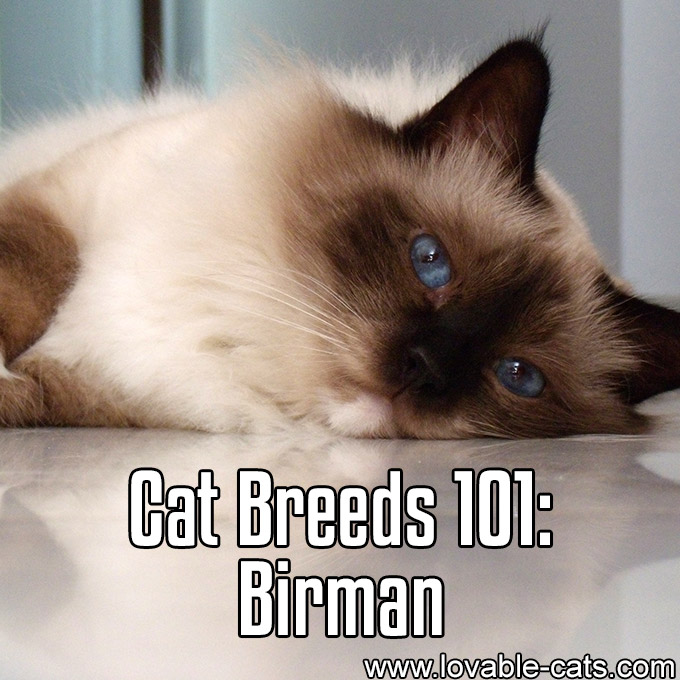
Cat Breeds 101: Birman – Image To Repin / Share
Photo: Wikipedia – lic. under CC 3.0
The Birman is a domestic breed of feline that is also known as “The sacred cat of Burma”. The breed derived its name from Birmanie, a French word for Burma. It was in 1925 when the breed was officially recognized by the France by the “Cat Club de France”. The breed is now recognized by the Governing Council of the Cat Fancy, United States’ Cat Fancier Association, The International Cat Association, and the Canadian Cat Association. [1]
Oftentimes, birmans are mistaken for Siamese or long-haired ragdolls. The early Birman cats were known to be seal point. It was only in 1959 when the blue color point was produced through the use of the blue Persian lines. Eventually, the English breeders added new colors such as red, lynx, and chocolate.
Birmans are am edium-sized domestic cat with a “rectangular” body. They are distinguished by their broad face, and distinct Roman nose. They have rounded pair of eyes that normally appear in Sapphire blue color.
On the other hand, Birman has medium-length silky coat. Today, the recognized color points include silver grey, blue, red, cream, seal, and chocolate. The coat of a Birman does not reach full development until the cat is at least 2 years of age. In fact, all kittens of this breed are born white. Their markings and colored points develop gradually within 2 years. Also, their four paws appear white at birth. [2]
They are also found to be very expressive. Birman cats are known to have soft voice tones which they usually use in communicating with people. They love learning new tricks in a dignified style. They are the type of cats that are able to master tricks easily.
This breed is known to enjoy the company of both humans and animals. In fact, they prefer being in a multi-pet household to being a home-alone cat.
Unlike other feline breeds, birmans are quite a good choice if you have valuable items placed in high shelves. They love to dwell in ground instead of staying in high perches.
It is also worth noting that owners and fanciers of this breed should carefully consider the amount of food given to the Birman. According to research, the breed is prone to getting overweight, especially when food portions are not monitored carefully. Also, their coat requires minimal grooming. Since they do not have undercoats, birmans are less prone to matting. Brushing at least once or twice a week can help in keeping their coat silky all the time.
References / More:
[1] https://en.wikipedia.org/wiki/Birman
[2] https://www.catster.com/cat-breeds/Birman
https://www.cfainc.org/Breeds/BreedsAB/Birman.aspx
https://www.tica.org/public/breeds/bi/intro.php?zoom_highlight=birman
